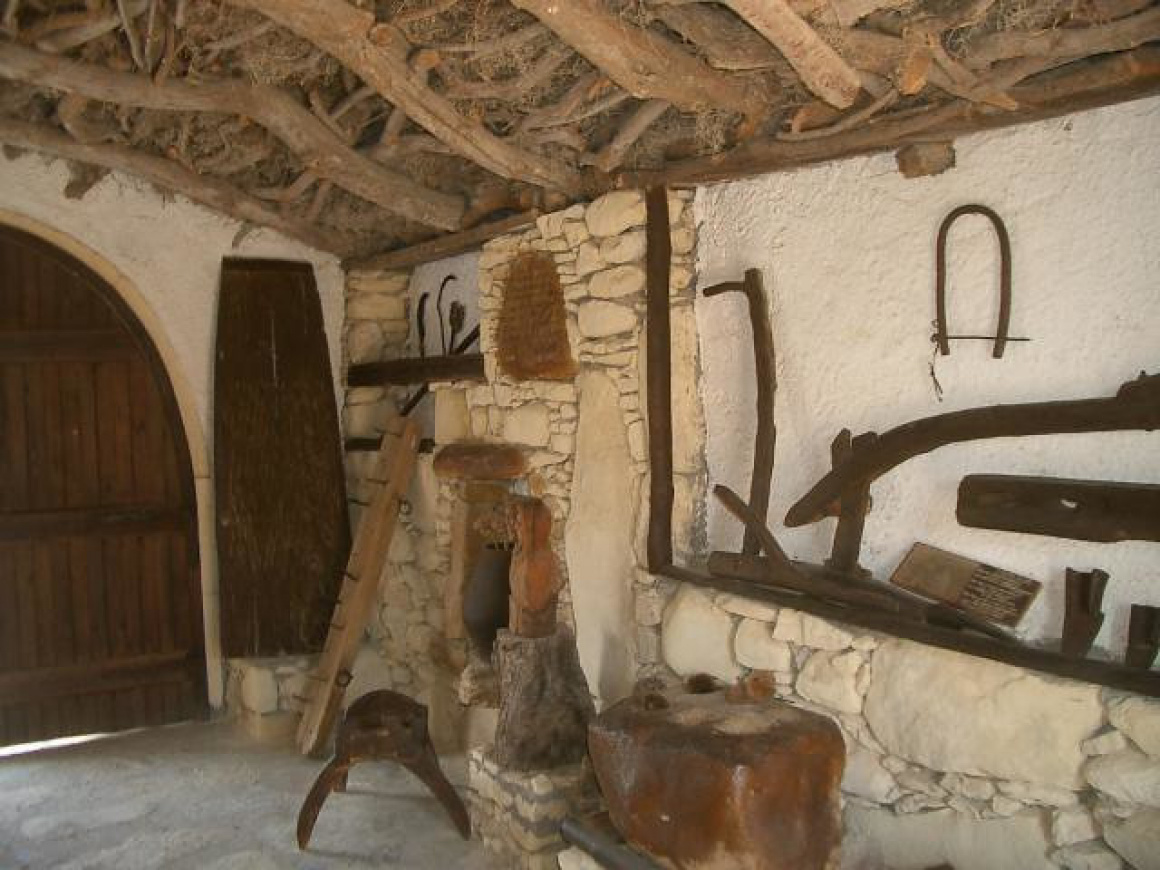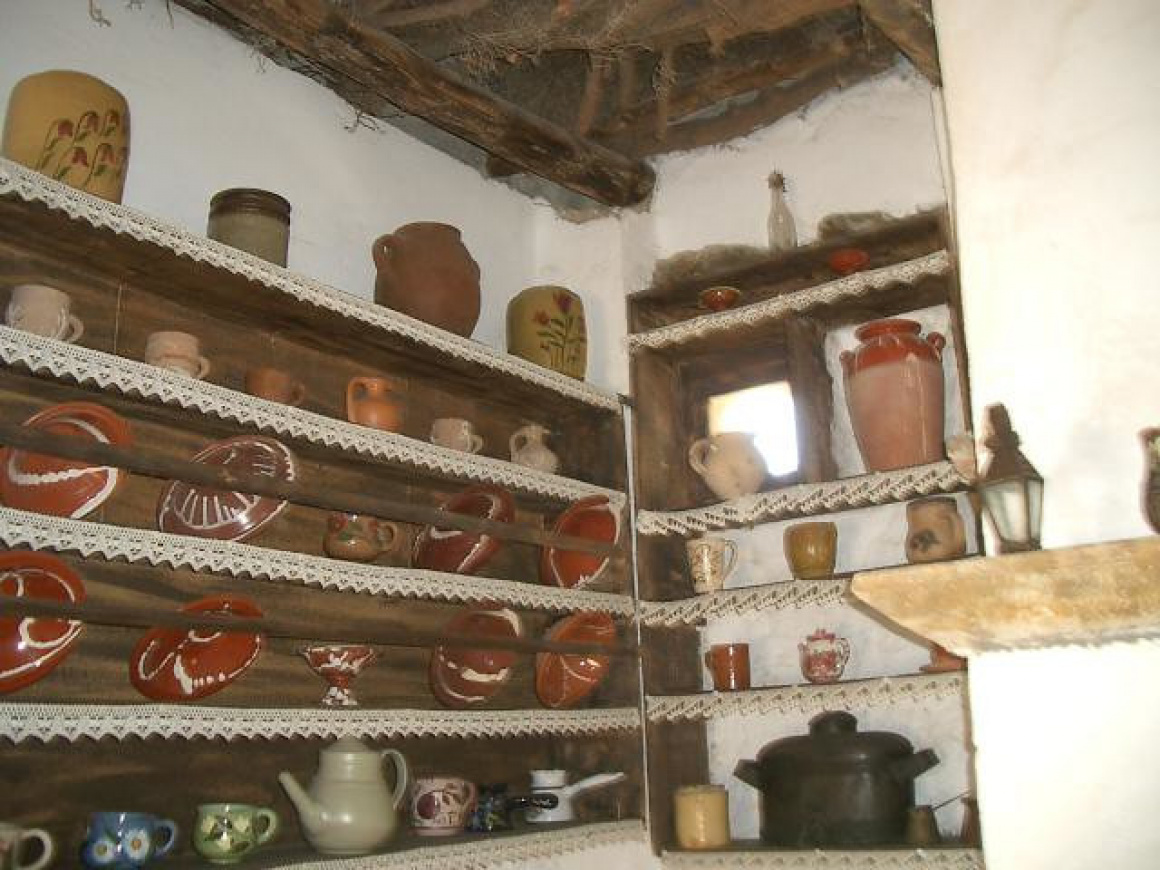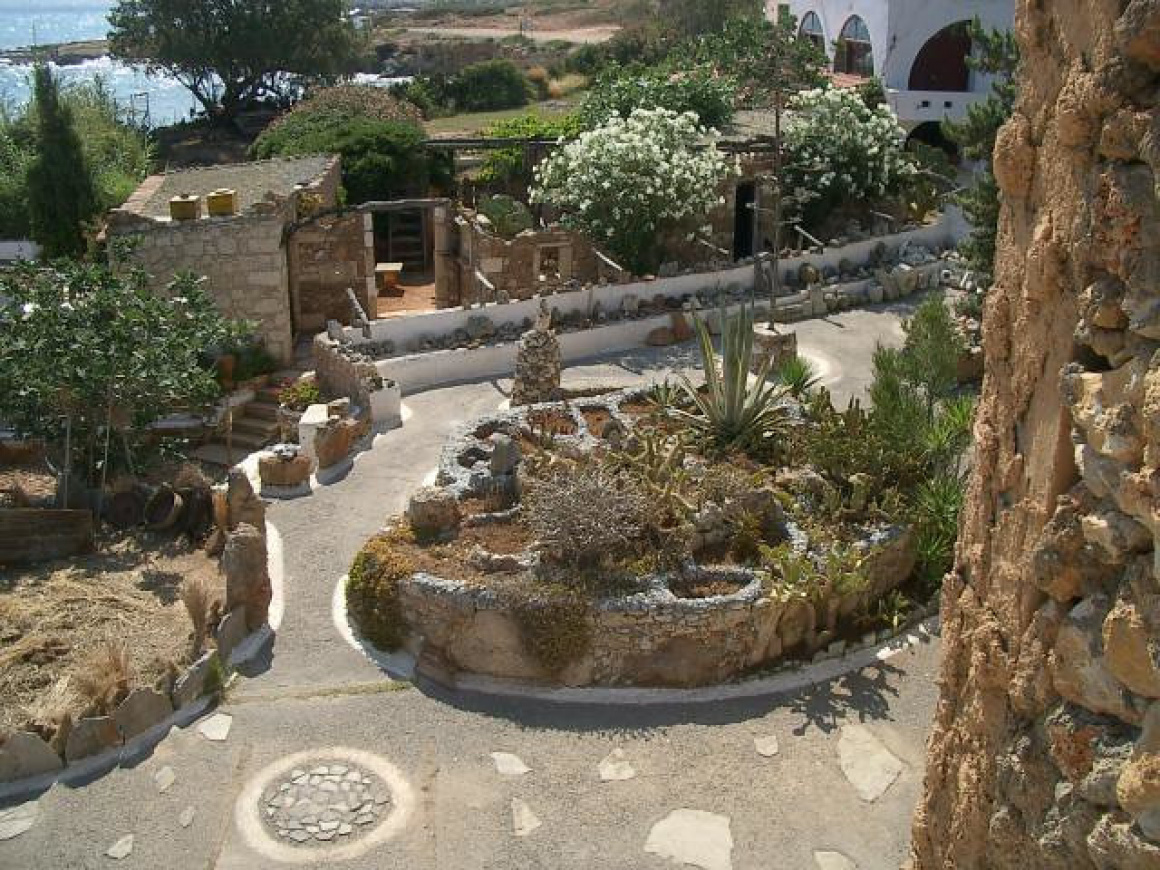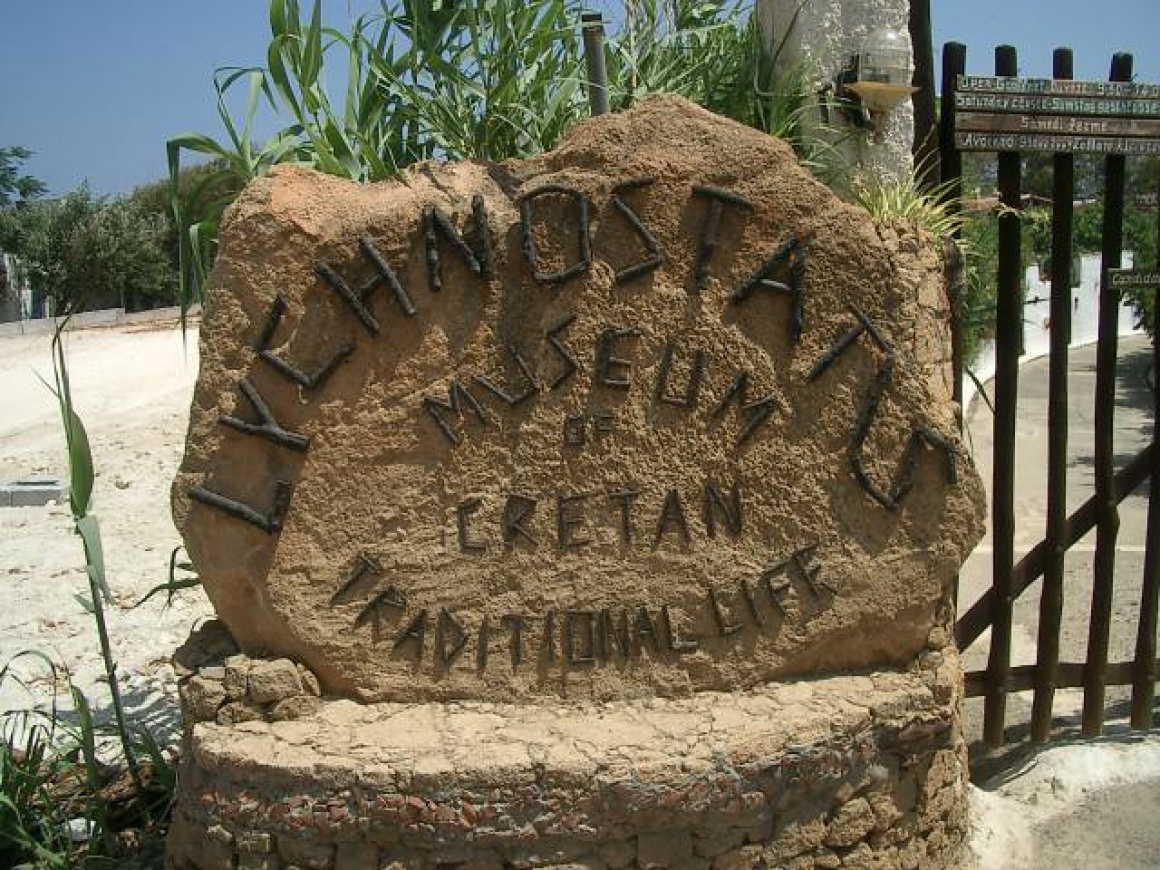On the eastern edge of Hersonissos, Crete's bustling resort town, lies a unique gem: the Lychnostatis Open Air Museum. Far from a typical gallery of artefacts, Lychnostatis is an immersive folk museum – essentially a recreated traditional Cretan village environment where you can wander through houses, workshops, and gardens that showcase the island's rural life and heritage. Founded in 1992 by a local doctor with a passion for folklore, Lychnostatis is named after the word for an old oil lamp (“λυχνόστατης”) – symbolising illumination of culture. Visiting this open-air museum feels like stepping back a century into a simpler time: you see how Cretans built their homes of stone and wood, how they pressed olives and grapes, wove textiles, and lived in harmony with the land and seasons. It's not just static; often there are demonstrations or audio guides that share songs, proverbs, and stories. What's more, the museum is beautifully set along the seafront, with paths lined by native plants (each labelled) and even a small vineyard and orchard. For travellers who want to understand authentic Crete – beyond Minoan ruins and Venetian monuments – Lychnostatis offers a sensory-rich education in everyday island traditions, from agriculture to craftsmanship, folklore to poetry. It's also one of the most family-friendly cultural attractions on Crete.

 'Maison rurale' - Attribution: DaffyDuke
'Maison rurale' - Attribution: DaffyDukeUpon entering Lychnostatis, you're greeted with a panorama of Cretan folk architecture. The entire museum is outdoors (with some shaded buildings), and it's arranged like a village:
Visiting:
The museum is usually open from April to October, Monday to Saturday during the mornings, with last entry in the early afternoon. It is closed on Sundays except for special event days. Entrance costs around €7-9 (with a reduced rate for children). It is located near Star Beach, at the east end of Hersonissos – a short walk or taxi ride if you are staying in Hersonissos, Stalis, or Malia.

 'Céramiques' - Attribution: DaffyDuke
'Céramiques' - Attribution: DaffyDukeExperience:
The museum is fantastic for children as it does away with the “don't touch” vibe – kids can run around, try pumping the water well, and even interact with the museum's farm animals, which may include a Cretan kri-kri goat and clucking chickens. Occasionally, a scavenger hunt is organised to encourage children to explore and discover various features.

 'Cactus' - Attribution: DaffyDuke
'Cactus' - Attribution: DaffyDukePractical tips:
Wear comfortable shoes as the pathways are pebbled and uneven in areas, much like in a real village. Bring a hat and water during the hotter months, although the abundance of shady spots and the refreshing seafront breeze are helpful. Resting areas with benches under grapevines are available throughout the museum.
Docents:
Guides dressed in traditional attire often add to the experience by offering a taste of raki or a sesame cookie – known as “kouloura” – as part of their warm hospitality. Their passion for the museum is evident and they are keen to answer any questions.
Shop & Cafe:
Near the exit, a charming little café under the vines serves fresh-squeezed juice, herbal teas from the garden, and housemade sweets such as spoon-sweets or pies. You can try a glass of locally produced wine or a shot of raki for an authentic refreshment. The gift shop offers handcrafted items like locally produced thyme honey, natural loofahs, small woven baskets, and books on Cretan folklore.
Planning your visit:
Allocate at least 1.5 hours – many visitors end up spending 2-3 hours, especially if they relax with a drink afterward. If you attend during a special event, such as one of the weekly demonstrations (for example, an olive oil demonstration every Monday at 12:00 or a weaving demonstration on Wednesdays at 12:00), plan your visit accordingly. It is advisable to check the museum's website or call ahead for details of any festivals.
After visiting ancient sites like Knossos or spending long hours on the beach, Lychnostatis offers a grounding experience that illuminates how centuries-old traditions continue to thrive. It celebrates the resourcefulness and artistry of ordinary Cretans – from constructing homes with thick stone walls and north-facing windows without electricity, to making textiles and utensils entirely from local materials. The museum's explicit theme of “Nature and Man” reinforces how integral the natural environment is to Cretan life.
It is also one of the best places to familiarise yourself with Cretan folklore: you can hear recordings of fairy tales or mantinades, observe objects used in old rituals such as the “May Day wreath” or the Easter bread stamp, and appreciate the significance of the lychnos (oil lamp) in everyday home life – the very symbol after which the museum is named.
After your visit to Lychnostatis, as you travel around Crete you might notice remnants of what you learned – whether it's a threshing floor ruin on a hill, a local woman still wearing a traditional black kerchief, or expansive terraced vineyards. This context enriches your experience when visiting less touristy villages, enabling you to better appreciate their historic architecture and unique way of life.
In essence, Lychnostatis Open Air Museum ensures that the folk culture of Crete – often overshadowed by its ancient wonders and beach resorts – receives the admiration it truly deserves. It is like a heartwarming storybook of Cretan life, told not through pages but through an actual, living environment by the sea, making it one of the most favourite experiences for visitors of all ages.
As you leave through an archway of blooming bougainvillea, you might feel that you have not just visited a museum, but been welcomed into a traditional Cretan homestead – and that is exactly the magical charm that Lychnostatis offers.


